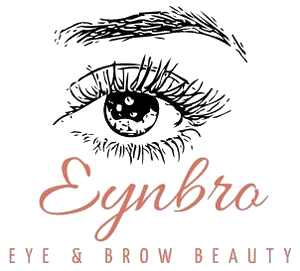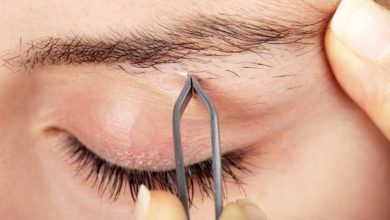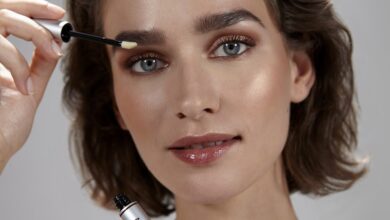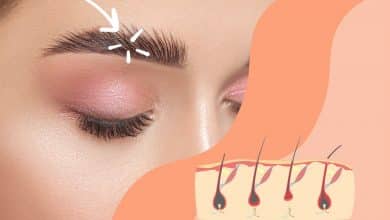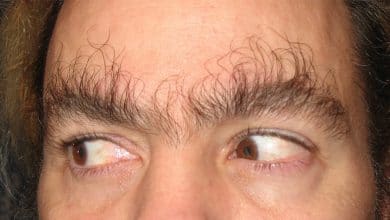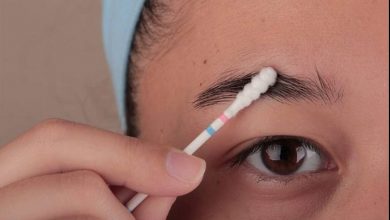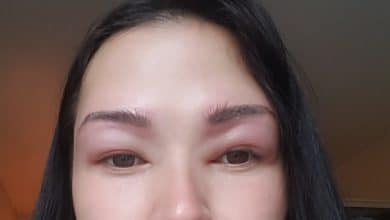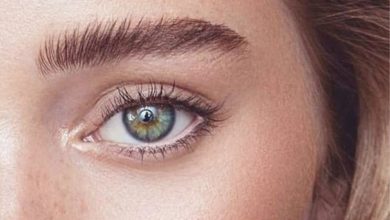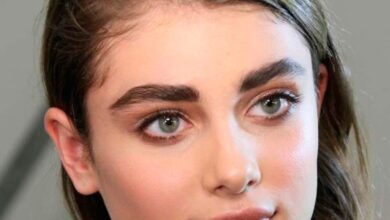How long do eyebrows take to grow back fully: A complete guide
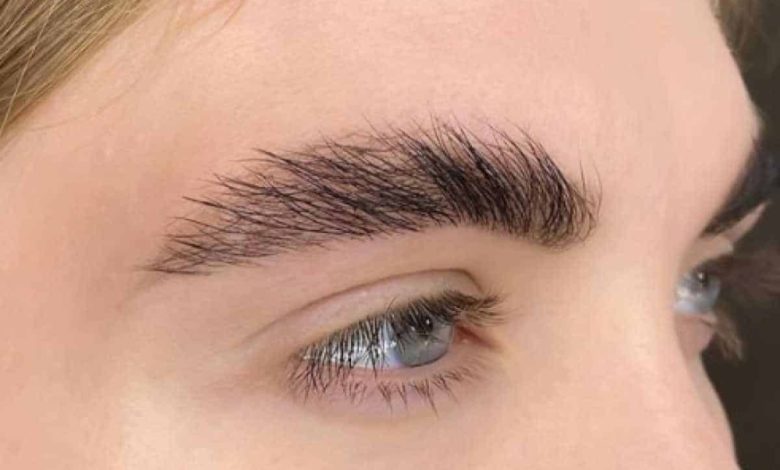
Eyebrows play a significant role in framing our faces and enhancing our overall appearance. However, there are times when we may find ourselves wanting to regrow our eyebrows after plucking, waxing, or other forms of removal. The process of eyebrow regrowth can be both intriguing and frustrating, as we eagerly anticipate the return of full and beautiful eyebrows. In this comprehensive guide, we will explore the factors that influence the duration of eyebrow regrowth and provide valuable tips to achieve full regrowth. So, if you’re curious about how long it takes for eyebrows to grow back fully, keep reading!
KEY TAKEAWAYS
- Eyebrows typically take about four to six months to grow back fully, but individual factors can affect the timeline.
- Factors such as the hair growth cycle, removal technique, overall health, genetics, and age can impact the regrowth process.
- To enhance eyebrow regrowth, allow them to rest, maintain a healthy diet, avoid harsh chemicals, stimulate growth with natural oils, practice gentle exfoliation, and seek professional advice when needed.
How Long Do Eyebrows Take to Grow Back Fully?
Understanding the timeline for eyebrow regrowth is essential to set realistic expectations. While the regrowth process may vary from person to person, it generally takes about four to six months for eyebrows to grow back fully. However, it is crucial to note that individual factors and circumstances can influence the speed and quality of regrowth. Let’s delve deeper into the factors that affect the duration of eyebrow regrowth.
Factors Affecting Eyebrow Regrowth
Several factors can impact the rate at which eyebrows grow back fully. It is important to consider these factors to understand why regrowth timelines may differ among individuals. Here are some significant factors to keep in mind:
Individual Hair Growth Cycle: Each person has a unique hair growth cycle, which consists of different phases, including anagen (growth), catagen (transition), telogen (resting), and exogen (shedding). The duration of these phases can vary, leading to differences in the speed of eyebrow regrowth.
Plucking or Removal Technique: The method used for eyebrow removal can affect regrowth. Plucking eyebrows from the root may result in slower regrowth compared to other methods, such as trimming or shaving.
Overall Health and Lifestyle: General health and lifestyle factors can influence hair growth, including eyebrow regrowth. A balanced diet, regular exercise, adequate sleep, and stress management contribute to optimal hair growth conditions.
Genetics and Age: Genetics play a role in determining the thickness, density, and growth rate of eyebrows. Additionally, age can impact the regrowth process, as hair growth tends to slow down with age.
Now that we have discussed the factors affecting eyebrow regrowth, let’s explore some essential tips to promote healthy and efficient regrowth.
Tips for Enhancing Eyebrow Regrowth
While the regrowth process may take time, there are several strategies you can adopt to support and enhance the growth of your eyebrows. Consider the following tips:
1. Allow Your Eyebrows to Rest
Avoid further plucking, waxing, or threading your eyebrows while they are regrowing. Allowing the hair follicles to rest and complete their natural growth cycle is crucial for optimal regrowth.
2. Maintain a Healthy Diet
A balanced diet rich in essential vitamins and minerals promotes overall hair health, including eyebrow regrowth. Include foods such as fruits, vegetables, lean proteins, and whole grains to provide the necessary nutrients for hair growth.
3. Avoid Harsh Chemicals and Makeup
During the regrowth process, refrain from using harsh chemicals, dyes, or eyebrow makeup products that can potentially damage the hair follicles or hinder regrowth. Opt for gentle, natural products instead.
4. Stimulate Growth with Natural Oils
Applying natural oils, such as castor oil, coconut oil, or olive oil, can help stimulate eyebrow growth. These oils contain essential nutrients and fatty acids that nourish the hair follicles and promote healthy regrowth. Gently massage a small amount of oil onto your eyebrows before bed and leave it on overnight. Rinse it off in the morning with lukewarm water.
5. Use Eyebrow Serums or Growth Enhancers
Consider using eyebrow serums or growth enhancers specifically formulated to promote eyebrow regrowth. These products often contain ingredients like peptides, vitamins, and biotin, which can help stimulate hair follicles and accelerate regrowth.
6. Practice Gentle Exfoliation
Regular exfoliation of the eyebrow area can help remove dead skin cells, stimulate blood circulation, and promote hair growth. Use a soft brush or a gentle exfoliating scrub to lightly massage the area around your eyebrows in circular motions.
7. Be Patient and Avoid Over-Plucking
Patience is key when it comes to eyebrow regrowth. Avoid the temptation to over-pluck or shape your eyebrows excessively during the regrowth process. Allow the natural hair to fill in and resist the urge to make drastic changes.
8. Seek Professional Advice
If you’re struggling with eyebrow regrowth or want expert guidance, consider consulting a professional esthetician or dermatologist. They can assess your specific situation, provide personalized advice, and recommend treatments or products that may expedite the regrowth process.
FAQ: Frequently Asked Questions
1. How soon can I expect to see regrowth after plucking my eyebrows?
After plucking your eyebrows, you can expect to see initial regrowth within a week or two. However, the new hair that emerges during this time is often fine and may not significantly contribute to the overall appearance of your eyebrows. It’s important to note that everyone’s hair growth cycle is unique, and individual factors such as genetics and overall health can influence the speed of regrowth. To achieve fuller regrowth, it’s best to be patient and allow for a longer regrowth period.
2. Can eyebrow growth be accelerated?
While there are no guaranteed methods to dramatically accelerate eyebrow growth, there are certain practices that can support and enhance the regrowth process. These include maintaining a healthy diet rich in essential nutrients, using natural oils or serums that promote hair growth, practicing gentle exfoliation to stimulate blood circulation, and avoiding harsh chemicals and over-plucking. Additionally, seeking professional advice from an esthetician or dermatologist can help determine if there are any underlying factors that may be hindering regrowth and provide personalized recommendations.
3. Are there any home remedies that can stimulate eyebrow growth?
Yes, there are several home remedies that are believed to stimulate eyebrow growth. One popular remedy is the application of castor oil, which is rich in nutrients and fatty acids that nourish hair follicles. Gently massage a small amount of castor oil onto your eyebrows before bed and leave it on overnight. Another remedy is the use of coconut oil, which also contains beneficial nutrients for hair growth. However, it’s important to note that the effectiveness of these remedies may vary from person to person, and it’s always best to consult with a professional if you have specific concerns or conditions that may affect eyebrow regrowth.
4. Can eyebrow pencils or makeup hinder the regrowth process?
Eyebrow pencils or makeup, when used appropriately and with gentle application, should not hinder the regrowth process. However, it’s essential to choose products that are of good quality and formulated with nourishing ingredients. Avoid using harsh or abrasive eyebrow pencils that may cause further damage to the hair follicles. When removing makeup, be gentle and use makeup removers that are designed for sensitive skin. It’s also advisable to give your eyebrows occasional breaks from makeup to allow the hair follicles to breathe and maintain their natural health.
5. Will eyebrow regrowth be the same as before after over-plucking?
Eyebrow regrowth after over-plucking can vary from person to person. In some cases, the regrown hair may be thinner or lighter in color compared to the original eyebrow hair. This can be a result of repeated plucking damaging the hair follicles or disrupting the natural growth cycle. However, with proper care and patience, it’s possible to achieve fuller regrowth over time. Avoid further over-plucking, follow a healthy hair care routine, and consider using eyebrow growth serums or consulting a professional for specialized advice.
6. Can stress affect eyebrow regrowth?
Yes, stress can potentially affect eyebrow regrowth. High levels of stress can disrupt the normal hair growth cycle, leading to slower regrowth or even temporary hair loss. Managing stress through relaxation techniques, exercise, and proper self-care can help maintain a healthy hair growth environment. It’s important to note that while stress may play a role in eyebrow regrowth, it’s not the sole factor, and other aspects such as genetics and overall health also contribute to the regrowth process.
7. Can I speed up the regrowth process by taking supplements?
Supplements can be beneficial in supporting hair growth, including eyebrow regrowth, especially if you have nutritional deficiencies or underlying health conditions that may affect hair health. Biotin, also known as vitamin B7, is one of the most popular supplements for promoting hair growth. It helps strengthen the hair follicles and encourages healthy regrowth. Other supplements that are believed to support hair growth include vitamins A, C, and E, as well as minerals like zinc and iron. However, it’s important to note that while supplements can provide additional support, they are not a magic solution for instant regrowth. Consistency is key, and it may take several weeks or months of regular supplementation before noticeable improvements in regrowth are observed. It’s always best to consult with a healthcare professional before starting any new supplements to ensure they are safe and suitable for your specific needs.
8. Are there any medical treatments available for eyebrow regrowth?
In some cases, medical treatments may be considered to stimulate eyebrow regrowth. One common treatment is the use of minoxidil, a topical medication that is FDA-approved for hair regrowth. It can be applied to the eyebrows to promote hair growth, although its effectiveness may vary from person to person. Another option is platelet-rich plasma (PRP) therapy, where a concentrated form of platelets derived from the patient’s blood is injected into the eyebrow area to stimulate regrowth. These medical treatments should be discussed with a dermatologist or healthcare professional who can assess your specific situation and provide appropriate recommendations.
9. Can eyebrow tattoos or microblading help with regrowth?
Eyebrow tattoos or microblading are cosmetic procedures that involve implanting pigment into the skin to create the appearance of fuller eyebrows. While they can provide an immediate solution for sparse or missing eyebrows, they do not directly stimulate natural regrowth. In fact, these procedures involve the removal of existing hair follicles, which can potentially hinder regrowth in the future. If you’re considering eyebrow tattoos or microblading, it’s important to carefully weigh the pros and cons, consult with a qualified professional, and consider the long-term implications for your desired regrowth goals.
10. Are there any risks or side effects associated with eyebrow regrowth?
In general, eyebrow regrowth is a natural process and does not pose significant risks or side effects. However, it’s important to be cautious when using certain products or undergoing specific treatments. Harsh chemicals, excessive plucking, or aggressive grooming can damage the hair follicles and potentially hinder regrowth. Additionally, some individuals may experience mild irritation or sensitivity when using certain topical products or oils. It’s crucial to perform a patch test before using any new products and discontinue use if any adverse reactions occur. If you have concerns or experience persistent issues during the regrowth process, it’s advisable to seek professional advice from a dermatologist or esthetician to ensure your safety and well-being.
CONCLUSION
In conclusion, achieving full eyebrow regrowth requires patience, care, and an understanding of the factors that influence the process. While it may take several months for eyebrows to grow back fully, implementing healthy habits and following the tips provided in this guide can support and enhance the regrowth journey. Remember to allow your eyebrows to rest, nourish them with a balanced diet and natural oils, avoid harsh chemicals and over-plucking, and seek professional advice if needed. With time and consistent care, you can regain the confidence of having beautifully regrown eyebrows that frame your face and highlight your natural beauty.
